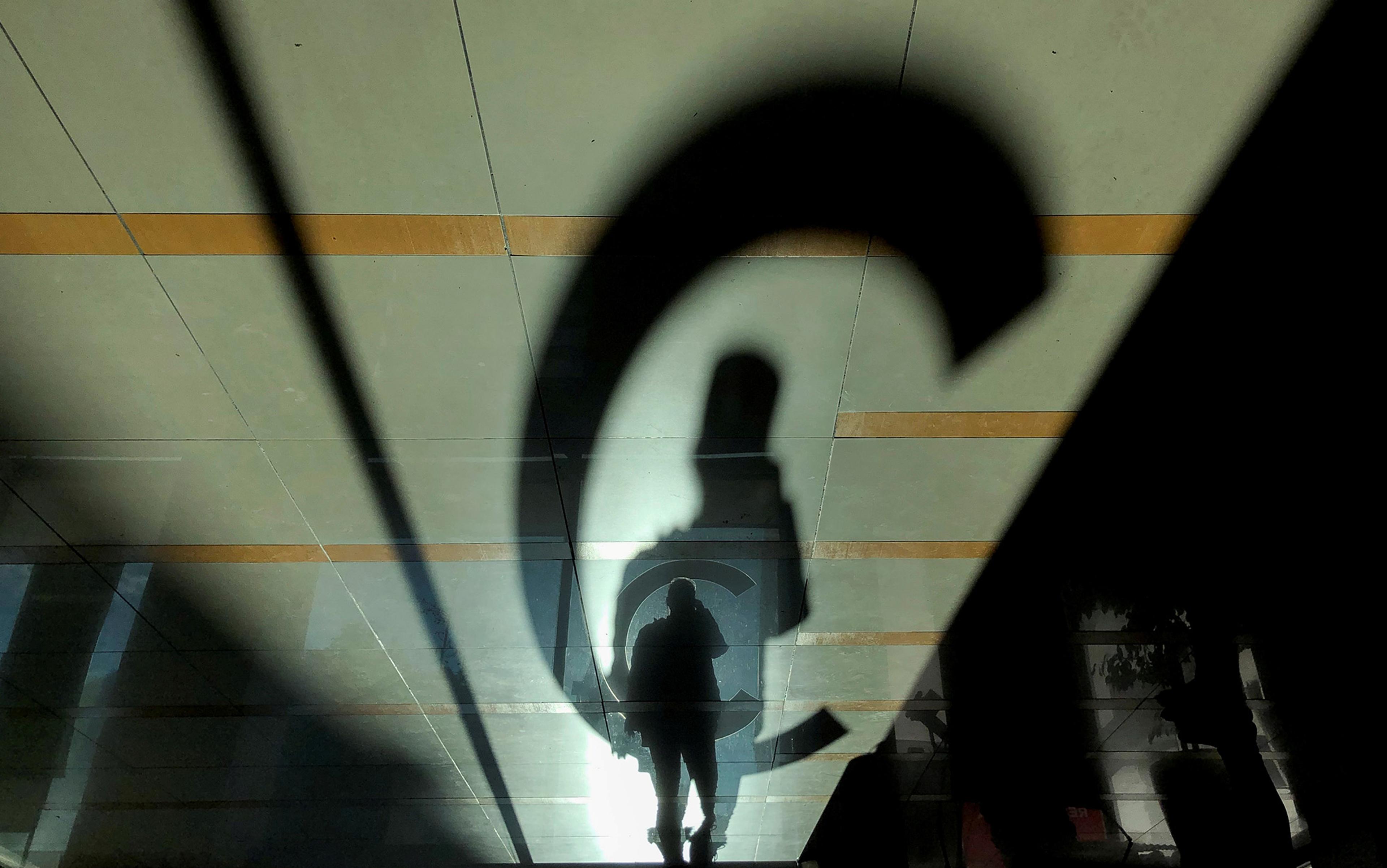The great fire of Notre Dame on 15 April 2019 broke the hearts of culture lovers around the world. Parisians wept in public while the flames reduced large parts of this monumental cathedral to smouldering ashes. The French president Emmanuel Macron Tweeted a sentiment that not only French people felt: ‘Je suis triste ce soir de voir brûler cette part de nous’ (‘I feel sad tonight to see this part of us burn’). According to official sources, the fire was accidental, most likely due to technological malfunction. Yet, it was only a matter of time before the first conspiracy theories started to circulate on social media. Even before the fire was extinguished, conspirational websites such as 4chan began alleging that the fire had been started by the French government, Jews, or an Islamic terrorist group. Almost instantly, the charges spread to a receptive audience worldwide. It was the expected course of events. Big, impactful and shocking social events – a fire, a flood, a terrorist strike, a war, and so on – typically elicit conspiracy theories among large groups of citizens who question the official reading of the news.
Prominent figures at the radical Right promoted the conspiracy theory that the fire was a terrorist strike by radical Muslims. The far-Right political commentator Hal Turner saw a link between the Notre Dame fire and other recent fires in Christian churches in the United States, Australia and Russia. He claimed that these incidents were the result of ‘Islamic warfare’, and even posted a video suggesting that a Muslim was at the Notre Dame Cathedral when the fire began. Fact-checking later revealed that the person in the video was not a Muslim but a fire-fighter, wearing a helmet, mask and protective clothing. By that time, the video had already been re-Tweeted hundreds of times. In my own country, the Netherlands, the video also gained attention when it was re-Tweeted by Thierry Baudet, the new rising star of the Dutch populist Right.
Particularly in the past few years, conspiracy theories have been omnipresent on the internet and in social media. These modern forms of communication allow conspiracy theories to spread faster than ever, and make it easy for like-minded people to connect and form online echo chambers. As a result, the flat-Earth movement – endorsing the conspiracy theory that the Earth is actually flat and that scientists have been lying to the public for more than 500 years – is now an organised society with regular conferences. People can even book holidays that focus on conspiracy theories; the Conspira-Sea cruise, for instance, offers a one-week vacation on a cruise ship, including a programme filled with conspiracy speeches and discussions.
In the wake of Donald Trump’s election in the US and the Brexit vote in the UK, conspiracy theories have become a normal part of political discourse, particularly among supporters of populist movements. These movements typically portray a struggle between ‘corrupt elites’ and ‘the noble people’. The populist mindset facilitates conspiracy theories, assuming that elites deliberately impose terrorist strikes, economic crises or disease epidemics on the rest. It seems as if we now live in an age of conspiracism. More citizens than ever before seem to believe conspiracy theories, and our society provides an exceptionally fertile soil for them to flourish.
But is this really the case? Sure, conspiracy theories spread fast nowadays, and like-minded believers rapidly find each other online. But that doesn’t prove that the proportion of believers has actually increased, or that modern technologies are a root cause. In fact, a penchant for the conspiracy theory has been around as long as Homo sapiens has.
A conspiracy theory is the suspicion that a group of actors have joined together in secret agreement to plan evil acts. This definition implies that a conspiracy always consists of multiple actors that work together in a coalition or a group. Lone actors may also plan to commit harm and carry out those plans, but lone actors are not conspiracies as long as they do not conspire with others. Furthermore, the definition suggests that conspiracies are planned by enemy groups: ‘They’ are trying to harm ‘Us’.
One might counter that citizens often believe conspiracy theories about the actions of their own government. But citizens may feel disenfranchised and alienated from the politics of their country’s government. In the US, Democrats may believe governmental conspiracy theories particularly when a Republican administration is in office, and vice versa. Put differently, citizens are most likely to believe such conspiracy theories when they perceive the government as ‘Them’, not representing ‘Us’.
This suggests that the root of conspiracy thinking lies in our ancient instinct to divide the social world into ‘Us’ and ‘Them’ categories. If true, one would expect that conspiracy theories were already common millennia ago, when all human beings lived as hunter-gatherers in a Paleolithic environment.
Inspired by their tribal nature, the evolutionary psychologist Mark van Vugt and I wrote an article, published in Perspectives on Psychological Science in 2018, that examines the evolutionary origins of conspiracy theories. Before the agricultural revolution of roughly 12,000 years ago, all human beings lived in small bands of hunter-gatherers. Such small societies didn’t have social media, populist movements, Democrats versus Republicans, or ethnic and religious diversity. What many of these societies did have, however, was lethal conflict with other groups. Although the prevalence of tribal warfare varied substantially between eras and locations, on average ancient humans had to be on guard for enemy groups much more than modern humans are. Archaeological records suggest that it was relatively common for ancestral humans to die in violent conflict with hostile coalitions or groups; substantial portions of fossilised remains found at various locations around the world show evidence of violent deaths, most likely due to hostile coalitions.
The realistic dangers of hostile groups thus constituted an adaptive problem for ancestral humans. This is still evident from the death tolls produced by tribal violence in hunter-gatherer societies today. For instance, the Yanomami people in South America regularly suffer high rates of lethal casualties due to tribal warfare. Such warfare often takes the form of blood feuds that can perpetuate over generations, in which members of one village take revenge for the harm caused by a different village. Groups of about 10 to 20 men typically attack an enemy village at dawn. Most often, these lethal coalitions kill the first few inhabitants that they encounter, and then retreat before the victimised village is able to get organised and fight back. Anthropologists have estimated that about 22 per cent of all the deaths among the Yanomami people are due to such coalition killings. Without the protection of large states and a strong rule of law, violent coalitions – that is, actual conspiracies – pose a real and serious danger to people’s lives and wellbeing.
What psychological features would increase the likelihood of surviving the perils of violence committed by other groups? One important factor is the human capacity to make assumptions about the intentions of others. Does that different tribe in the vicinity have positive, peaceful intentions? Or are they planning to attack and kill us in order to confiscate our territory and resources? By making such assumptions, people gauge how dangerous different groups are before they strike. Such empathic foresight enables people to take appropriate, life-saving action on time. If ancestral humans believed that another group was conspiring to harm them, they could, for instance, migrate to a safer environment; they could develop a solid defence system; they could even commit a surprise attack themselves (a ‘preemptive strike’) to chase away, or kill, the suspected conspiracy. Either way, people could protect themselves and their kin against lethal violence by recognising other groups’ hostile intentions at an early stage.
But assumptions can be mistaken, and not all types of mistakes are equally costly. Consider the example of seeing a strange shadow in the woods. Is it a dangerous tiger, or just the shadow of a rock behind the trees? If the shadow is a rock but one mistakes it for a tiger, there is little harm done. Except for an unnecessary detour and some stress, life continues as usual. However, if the shadow is a tiger but one mistakes it for a rock, a person is in serious danger by obliviously crossing the tiger’s path. Evolutionary theories therefore propose that when the costs of false-positives (mistakenly seeing a tiger when in fact there is none) are unequal to the costs of false-negatives (mistakenly not seeing a tiger when in fact there is one), natural selection will favour a tendency to make the less costly type of mistake.
It was too risky to trust groups one did not know, and that were powerful enough to commit harm
People also make these mistakes when assessing the intentions of different groups, and both false-positives and false-negatives carry some costs. When a member of the Yanomami dies under mysterious circumstances, tribe members often blame the death on sorcery committed by members of a different village. This conspiratorial allegation is unlikely to be true, yet it can cause conflict, and even revenge killings. Such a false-positive implies an unnecessary conflict with a group that could be a useful ally or trade partner. This is certainly a wasted opportunity, and hence costly. Yet, in an environment where lethal conflict between groups is common, the price of a false-negative is likely to be much higher.
Some tribes have a history of mutual raiding and violent conflict over territory or valuable resources – such as between the Nyangatom and the Daasanach people in Ethiopia. If a genuine risk of an enemy attack exists, some safety precautions are warranted, even if one might overestimate the other group’s aggressive intentions. Perceiving a hostile group as harmless puts one at risk for victimisation, and can result in injury, imprisonment, forced labour, rape and death. If false-negatives indeed were more costly than false-positives when trying to estimate the intentions of different groups, evolutionary theories would predict that ancestral humans evolved to be conspiracy theorists. This can manifest itself in various ways, such as conspiracy theories about how exactly different groups prepare to commit harm, or theories that blame these different groups for the misfortune that one experiences. Due to the actual perils of violent coalitions or groups, it was too risky to take chances and trust groups that one did not know very well, and that were powerful enough to commit harm.
After the agricultural revolution, human beings gradually started living in large states and societies changed at a fast pace. However, this didn’t change people’s tendency to suspect conspiracies, as Ancient Greek myths reveal. When the Argonauts arrived at Lemnos, they found that only women inhabited the island. According to the legend, after these women had discovered that their husbands had cheated on them with Thracian women, they conspired to kill all the men on the island.
Ancient Rome had its fair share of conspiracy theories too, and the Latin word coniuratio (‘conspiracy’) appears frequently in the writings of the Roman historians Tacitus, Sallust and Livy, as well as in the speeches of Cicero. They frequently voiced suspicions of how slaves, women or foreigners conspired against the Roman elites. Livy describes how in 331 BCE many Roman elite citizens were suffering and dying from an unknown disease. A young slave woman then accused a group of upper-class women of poisoning Roman citizens. According to Livy, two of these conspiring women were forced to drink their poisoned concoctions in the Senate, and died in public. A total of 170 women were found guilty of participating in this conspiracy. Furthermore, Roman emperors regularly suspected that conspiracies were being formed against them. Tacitus, for instance, described Emperor Tiberius as a suspicious ruler who murdered various possible rivals to the throne. These murders included the grandson of the previous Emperor Augustus. Tiberius’ own adopted nephew Germanicus also died under mysterious circumstances, and Tacitus suspected that he was murdered as well. When the emperors were suspicious, it was not always irrational: actual conspiracies did occur, the assassination of Julius Caesar being a well-known case in point.
Conspiracy theories were numerous in medieval times. Many suspected that secret societies such as the Illuminati, originally launched in Bavaria, controlled the world through an internecine network of connections and front groups. Others spread the idea of ‘blood libel’, in which Jews were accused of murdering a Christian child each year and using the blood for religious rituals. In the French town of Blois, in the year 1171, all the members of the local Jewish community were burned at the stake following such a conspiratorial accusation. Supernatural conspiracy theories were also common. The infamous 15th-century book Malleus Maleficarum (‘the Witch Hammer’) by Heinrich Kramer gave momentum to widespread witch hunts across Europe. One core assumption of the book is that witches conspired, and had sexual intercourse, with the devil. In line with that, they were said to sacrifice unbaptised children to the devil (not only killing them but preventing them from going to heaven), cook the bone marrow of first-borns to create magic creams (which they applied to sticks or brooms, providing them with flight capacities), spread diseases, and make crops fail.
Conspiracy theories have permeated the history of humanity from our earliest hunter-gatherer days through to modern times. We are less likely than our ancestors to be killed by enemies, and are relatively well-protected by the legal system, to name just a few differences. However, the fact that our environment has changed doesn’t mean that our evolved, ancestral brain has changed along with it. This is the basic idea of an evolutionary mismatch: over the past 12,000 years, the way in which human beings live has changed quickly and dramatically. But on an evolutionary scale, 12,000 years is just a fraction of time, and our inborn predispositions have not changed by much. Our brains are adapted to a stone-age environment but we live in modern times.
As a result, some traits that were once functional are no longer functional, or sometimes even dysfunctional in the context of today. Take people’s appetite for sweetness: in the Palaeolithic, a preference for sweet tastes was adaptive because it stimulated people to eat nutritious food from nature, such as berries and sweet potatoes; in modern times, this same preference makes people consume excessive quantities of sugary drinks and candy, causing obesity and expensive dental treatments.
A similar mismatch is likely for conspiracy theories: ancestral humans were easily suspicious of a different tribe nearby, which might well have saved their lives. They would migrate into safety before the other tribe committed a lethal attack. Modern humans are still easily suspicious of different groups – but now these different groups might consist of medics, scientists and pharmaceutical companies, leading people to refuse life-saving vaccines or treatments. Or they might consist of ethnic minorities, amplifying xenophobia, discrimination and exclusionary policies.
Xenophobic sentiments fuel conspiracy theories about minority groups
Conspiracy theories appear in all cultures, worldwide. For instance, Indonesia has suffered a fair share of terrorist strikes in the past decades, and a common conspiracy theory in that region is that the Western world is behind these attacks, hoping to blame them on Islam.
In Poland, many people blame the 2010 Smolensk plane crash – which killed all 96 people on board, including many prominent politicians such as the Polish president Lech Kaczyński – on a Russian conspiracy. In South Africa, a country with high rates of HIV infections in the population, a common conspiracy theory is that pharmaceutical companies produced and disseminated the HIV virus to sell antiretroviral medication. Finally, conspiracy theories are common in rural Africa, including Tanzania, Nigeria and Mozambique, where many people believe that modern Western technology is a form of sorcery designed to harm or control them.
The psychological essence of all these conspiracy theories is much the same: people make assumptions of how a different group colludes in secret to harm or deceive them. Modern conspiracy theories are thus rooted in our ancient tribal instinct to classify the world into ‘Us’ versus ‘Them’. This insight helps to explain the appeal of conspiracy theories among populist movements, which describe an eternal struggle between regular, hardworking citizens and a corrupt elite. Although populism spans the political spectrum, far-Right populist movements in particular tend to demonise ethnic or religious minorities as hostile groups. Turner’s ideas about the Notre Dame fire underscores how xenophobic sentiments fuel conspiracy theories about minority groups.
One factor that might have contributed to the recent electoral success of populist movements is the increasing plurality of modern societies. Armed conflicts in the Middle East have stimulated an influx of refugees across the European Union, and many citizens of central American countries try to escape violence and poverty by immigrating to the US or Canada. Besides such need-based forms of immigration, in our globalising world it is now also easier than ever before to work or study abroad, to travel to different places, or to move to a different country in order to start a life with a romantic partner.
While many people might embrace such plurality as positive, quite a few people are likely to experience it as threatening. These people feel that their own group is under threat from strangers, paving the way for conspiracy theories as a populist motivator and tool. These theories strengthen the appeal of populist rhetoric that emphasises sentiments against immigration and globalisation, and promises to reinstall a nation’s previous glory.
This evolutionary perspective sheds light on extremist organisations endorsing violent conflict with other groups. Left-wing extremists promulgate conspiracy theories about how bankers and multinationals secretly control the world. Right-wing extremists endorse conspiracy theories about how ethnic minority groups will overtake their culture. Muslim fundamentalist groups endorse conspiracy theories about how the Western world tries to subvert Islam. When a nation is at war, the conspiracy radar is high. Recall that the George W Bush administration justified the war against Iraq with allegations that Saddam Hussein was secretly developing and hiding weapons of mass destruction. These allegations turned out to be an invalid conspiracy theory. Finally, distressing events in general elicit conspiracy beliefs, but mostly to the extent that people blame such events on groups that they distrust to begin with. Through conspiracy theories, people blame an economic or financial crisis on bankers, a terrorist strike on secret-service agencies, a disease epidemic on the pharmaceutical industry, and so on.
People differ in how prone they are to believe conspiracy theories. Some citizens are active on conspiracy websites and assume a conspiracy for almost anything that happens in the world, while others are skeptical of most conspiracy theories and tend to reject them out of hand.
This raises a question: if a tendency to believe conspiracy theories has evolved through natural selection, shouldn’t we all believe conspiracy theories to the same extent? But, in fact, individual differences are a prerequisite for natural selection to occur: if everyone had the same trait to exactly the same extent, there would be nothing to select for. Take speed in predators. Some leopards run faster than others; does this observation speak against the notion that speed in leopards is a product of natural selection? Of course not. Leopards evolved speed because there was variation. Some leopards were better able than others to survive and reproduce because they ran faster, and thus were more likely to catch prey. The average speed of leopards therefore progressively increased over generations, but this doesn’t have to eradicate variation within generations. If natural selection favoured a tendency to believe conspiracy theories, one would expect many conspiracy theories in the human population without excluding possible variation in how strongly people believe them.
Many present-day conspiracy theories are maladaptive, and lead to poor health choices
Of interest here is that people not only differ in conspiracy beliefs but also in how prone they are to interpret ambiguous social signals as evidence of conflict with other groups. For instance, collective narcissism – an unrealistic belief in the greatness of one’s own group – is a good predictor of aggression towards other groups. Likewise, people differ in how much they value authority, order and tradition, a trait known as authoritarianism, which is closely coupled with prejudice about different groups. Research indicates that those with high levels of collective narcissism, or authoritarianism, are also likely to believe conspiracy theories. Put differently, personality traits that predispose people to prejudice, discrimination and hostility towards other groups go hand in hand with a tendency to believe conspiracy theories. Some people see hostility and conflict with other groups where others see none. Perceiving conflict with other groups drives conspiracy beliefs.
There is a paradox in the evolutionary argument, however. After all, evolutionary processes are descriptive and not prescriptive. Finding that conspiracy theories evolved for good reason in the past doesn’t mean that it is desirable to believe conspiracy theories in the present. Many present-day conspiracy theories are maladaptive and lead to poor health choices such as rejecting vaccines or contraceptives, climate-change denialism, hostility, xenophobia, radicalism and, in extreme cases, violence.
When in December 2016, Edgar Maddison Welch opened fire in the pizza restaurant Comet Ping Pong in Washington, DC, one might say he was following his evolved conspiratorial instincts. He believed the ‘Pizzagate’ conspiracy theory – that prominent members of the Democratic Party engaged in human trafficking and paedophilia in the restaurant’s basement – and tried to release the victims. Both the gunman himself and anyone present in the restaurant would have been better off if Welch had been able to suppress his conspiratorial instincts and reflect more rationally on the plausibility of this conspiracy theory. Just like physicians urging us to overcome our evolved appetite for sugar, an important future challenge might be to overcome our evolutionary legacy to turn to conspiracy theories whenever we feel insecure.
The Notre Dame fire was a shocking event that stimulated people to search for explanations. How can such a monumental building that we all care deeply about catch fire? In finding explanations, the human mind is hardwired to overestimate the likelihood that a conspiracy caused the event. Macron was right: we were indeed sad that night to see a part of ‘Us’ burn. But one might add that the fact that a valuable group was harmed so significantly made it tempting to blame the fire on ‘Them’ – whatever societal group one despises. The scientific principle of parsimony stipulates that the simplest explanation usually is the most likely (in this case, a technological malfunction), yet people’s natural response is to assume the worst, and little is worse than a coordinated attack by an enemy conspiracy.
Do we now live in an ‘age of conspiracism’? Social media certainly has introduced new dynamics in how conspiracy theories spread, how conspiracy theorists get organised, and how easily one can find conspiracy theories. It is also undeniable that many citizens in the world believe conspiracy theories, and that populist movements that actively propagate conspiracy theories have enjoyed remarkable electoral success in recent years. But that doesn’t make the present appreciably different from the past. Throughout history, conspiracy theories have been common, spreading through any available communication channel, and fuelling conflict, prejudice, hatred and war. The ‘age of conspiracism’ has lasted for millennia. Conspiracy theories always have been part of the human condition, and always will be.






